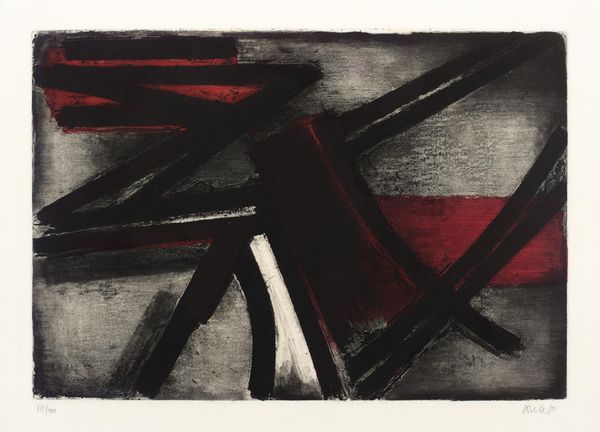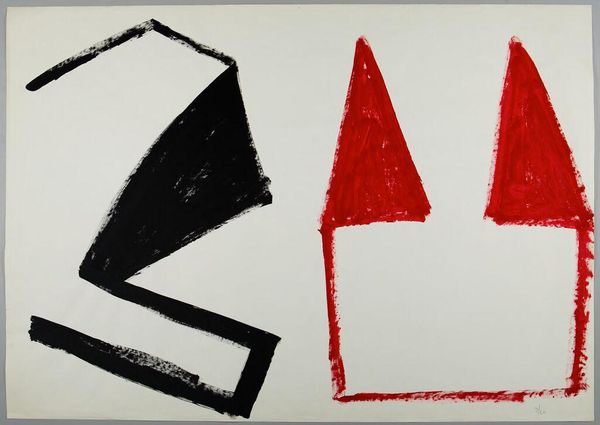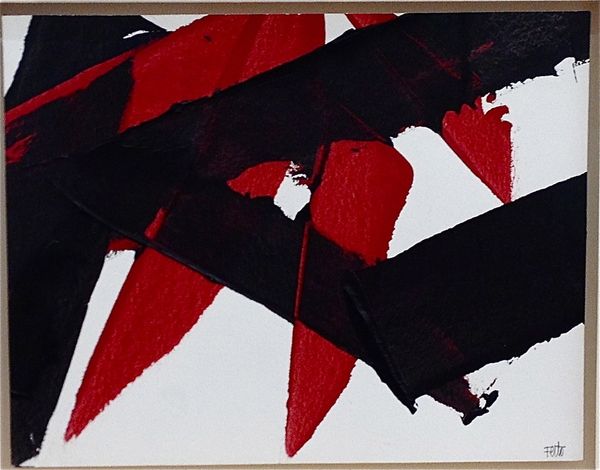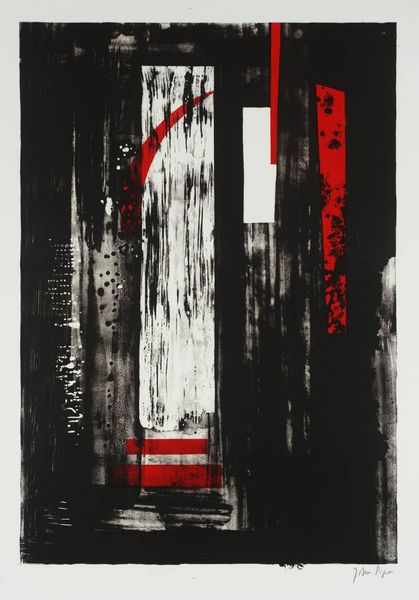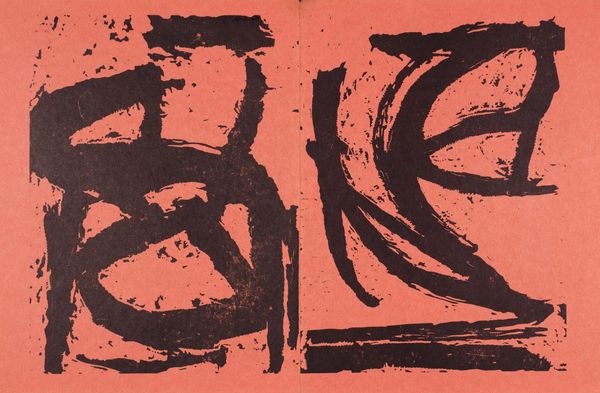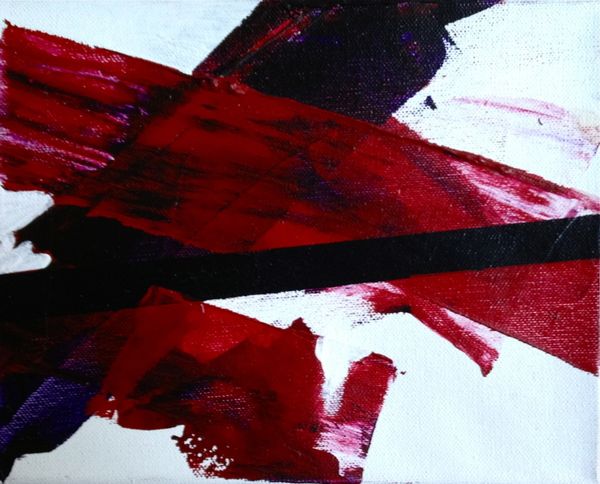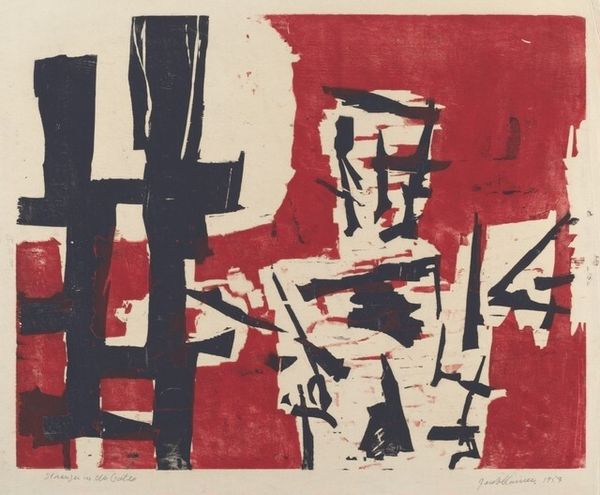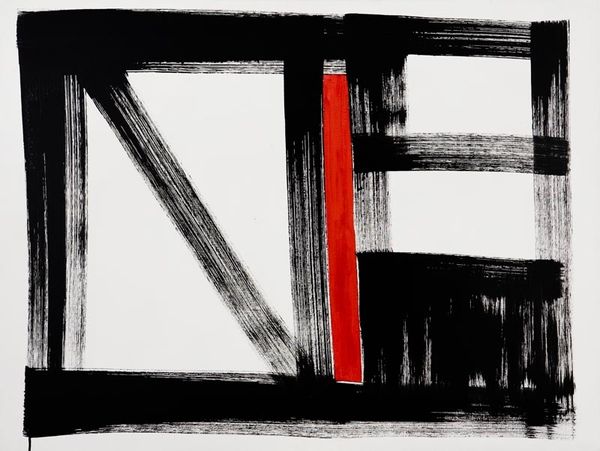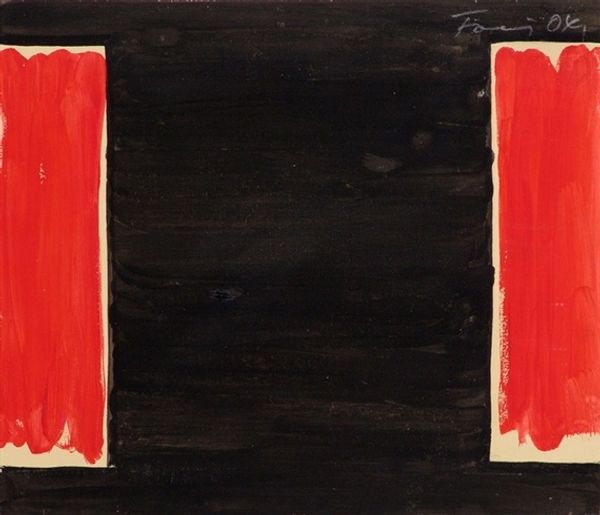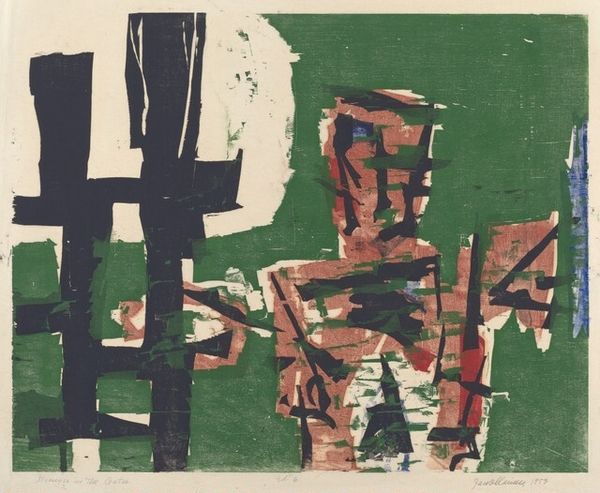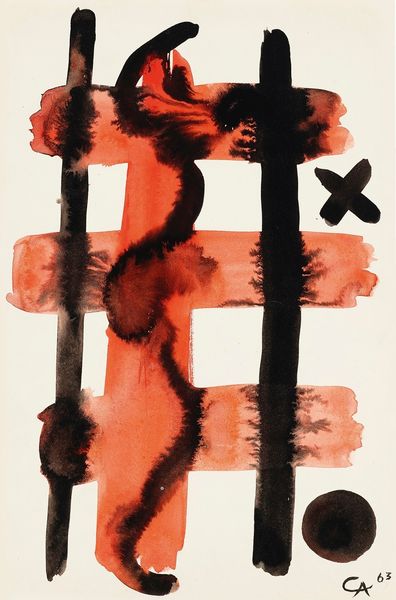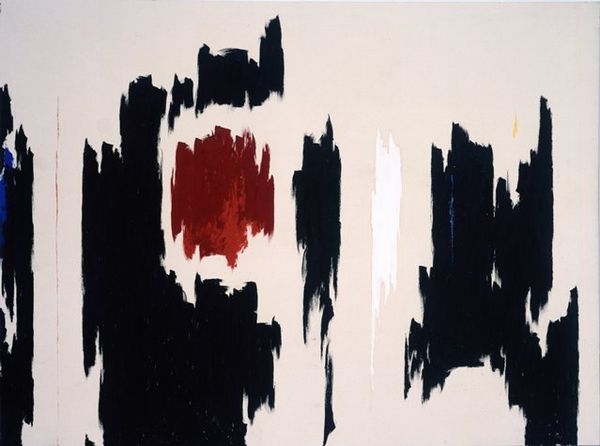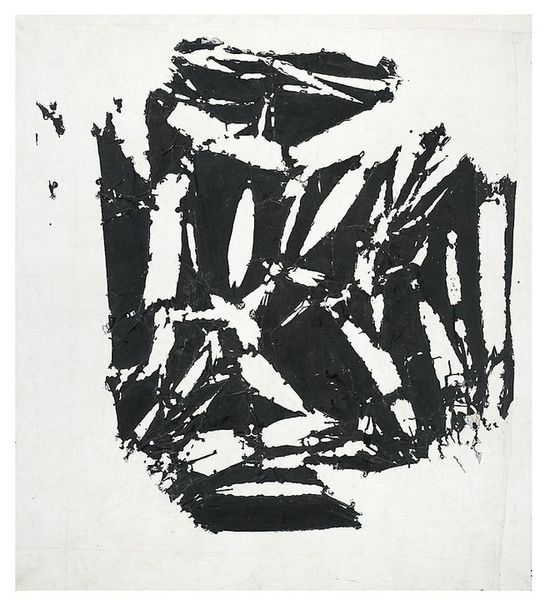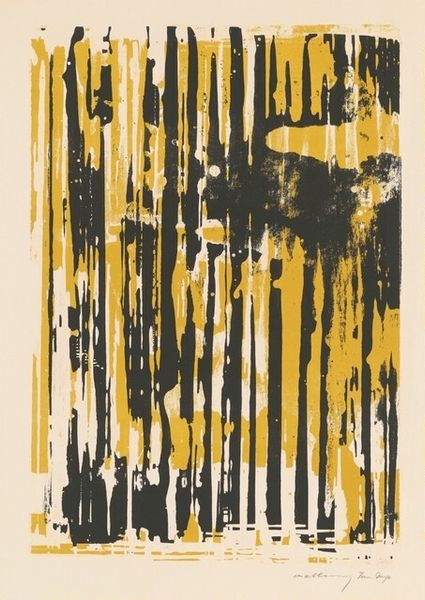
Dimensions: image: 502 x 760 mm
Copyright: © The estate of Denis A. Bowen | CC-BY-NC-ND 4.0 DEED, Photo: Tate
Curator: Here we have Denis Bowen’s "Red and Black (Flying City Series)." The date is unknown, but it is part of the Tate Collection. Editor: My first impression is tension. The bold red slashes fight against the stark black background. It feels almost confrontational. Curator: Red and black are powerful colours, often linked to primal emotions. The aggressive brushstrokes and overlapping forms could symbolize the chaotic energy of modern urban life. Editor: It also reminds me of protest art. The red could symbolize anger, the black mourning. Is this a commentary on social unrest, perhaps? Curator: It's certainly open to interpretation. Bowen's abstract style invites viewers to project their own feelings onto the work. Editor: I find myself dwelling on what this flying city represents – is it progress or impending doom? A utopia or dystopia? Curator: Yes, the ambiguity is key. It's a potent reminder of the complexities inherent in any grand vision. Editor: Well, it certainly gives you much to consider. Curator: Indeed, a piece that resonates long after you've moved on.
Comments
tate 6 months ago
⋮
http://www.tate.org.uk/art/artworks/bowen-red-and-black-flying-city-series-p78595
Join the conversation
Join millions of artists and users on Artera today and experience the ultimate creative platform.
tate 6 months ago
⋮
Red and Black is an early example of serigraphy, also known as silkscreen printing. The appeal of this new technique for artists who attached great importance to spontaneity lay in the speed and freedom with which images could be made. With more traditional techniques spontaneity tended to be compromised by the laborious methods involved. In addition Peter Davies notes that ‘The fine weave of the screen allowed intriguing half-tone effects that an abstract artist enjoyed for purely textural rather than descriptive ends’ (Davies, p.15). His practice, which was steeped in quasi-Zen philosophy, involved the use of meditation to ‘empty his mind’ of thoughts. Once he had reached a state of ‘hyperconsciousness’, he would build up an image with rapid strokes, splashes and drips, using such unconventional materials as oil paint mixed with sand and household emulsions (Gaskin, p.44).
